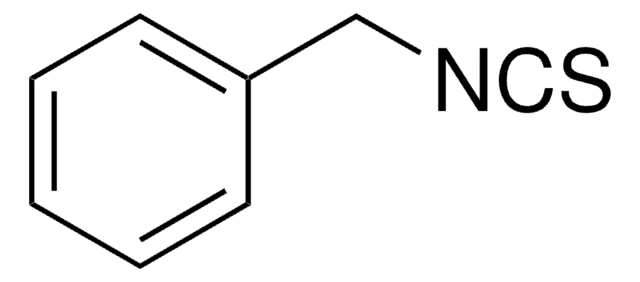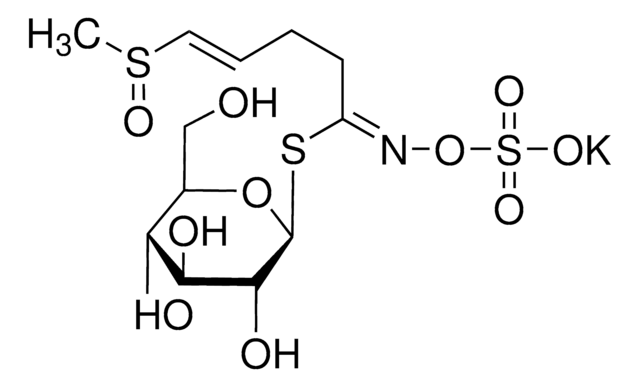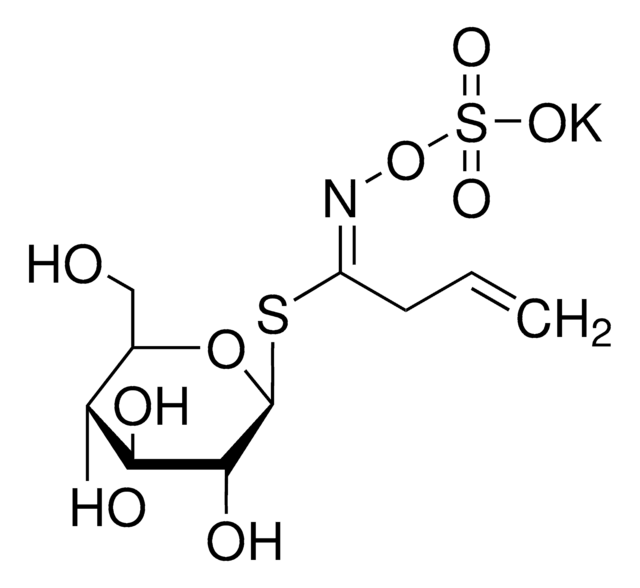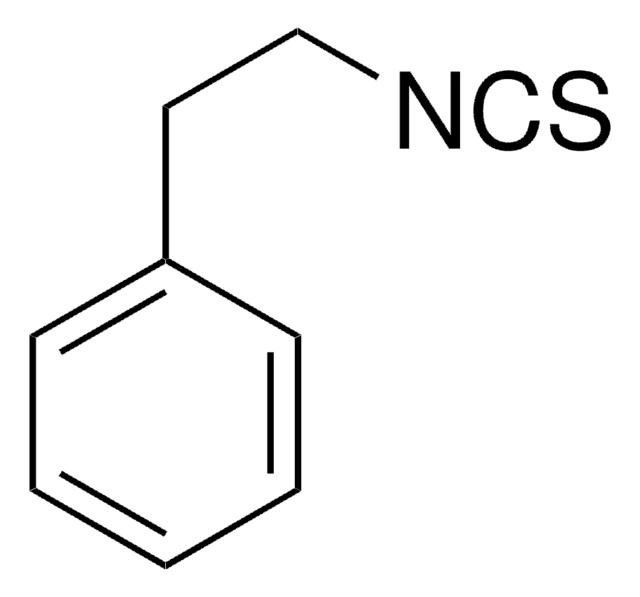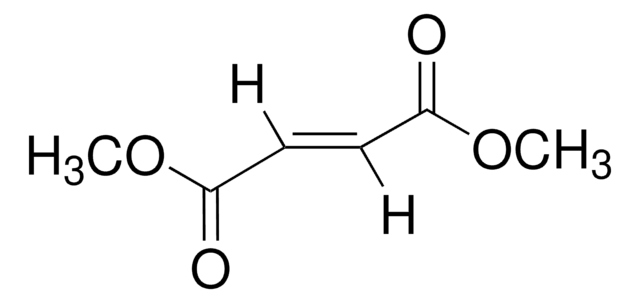推荐产品
产品名称
萝卜硫素, An isothiocyanate isolated from broccoli that acts as a potent inducer of phase II detoxifying enzymes in mouse tissues and murine hepatoma cells in culture.
品質等級
化驗
≥98% (UPLC)
形狀
liquid
製造商/商標名
Calbiochem®
儲存條件
OK to freeze
protect from light
顏色
slight yellow
溶解度
ethanol: 10 mg/mL
DMSO: 20 mg/mL
運輸包裝
ambient
儲存溫度
−20°C
InChI
1S/C6H11NOS2/c1-10(8)5-3-2-4-7-6-9/h2-5H2,1H3
InChI 密鑰
SUVMJBTUFCVSAD-UHFFFAOYSA-N
一般說明
从花椰菜中分离的异硫氰酸酯,在小鼠组织和培养的小鼠肝癌细胞中作为II期解毒酶的有效诱导剂。它已被证明是预防大鼠化学诱导的乳腺肿瘤的有效药物。它还抑制与致癌物激活相关的I期细胞色素P450同功酶2E1和IA2。II期酶的诱导是通过丝裂原活化蛋白激酶(MAPK)途径介导的。
从花椰菜中分离的异硫氰酸酯,在小鼠组织和培养的小鼠肝癌细胞中作为II期解毒酶的有效诱导剂。被证明是预防化学诱导的大鼠乳腺肿瘤的有效药物。还显示出抑制与致癌物激活相关的I期细胞色素P450同功酶2E1和IA2。II期酶的诱导由丝裂原活化蛋白激酶(MAPK)途径介导。
生化/生理作用
主靶
小鼠组织和培养的小鼠肝癌细胞中II期解毒酶的有效诱导剂
小鼠组织和培养的小鼠肝癌细胞中II期解毒酶的有效诱导剂
产物不与ATP竞争。
可逆:否
细胞可渗透性:否
包裝
用惰性气体包装
警告
毒性:标准处理(A)
重構
复溶后,等分并冷冻DMSO贮备液(-20°C)和乙醇贮备液(-70°C)。DMSO贮备溶液在-20°C下可稳定保存长达3个月,在-70°C下可稳定保存长达3个月。
其他說明
Gamet-Payrastre, L., et al. 2000.Cancer Res.60, 1426.
Yu, R., et al. 2000.J. Biol. Chem.275, 2322.
Yu, R., et al. 1999.J. Biol. Chem.274, 27545.
Barcelo, S., et al. 1998.Mutat.Res.402, 111.
Maheo, K., et al. 1997.Cancer Res.57, 3649.
Zhang, Y., et al. 1994.Proc.Natl.Acad.Sci. USA91, 3147.
Zhang, Y., et al. 1992.Proc.Natl.Acad.Sci. USA89, 2399.
Yu, R., et al. 2000.J. Biol. Chem.275, 2322.
Yu, R., et al. 1999.J. Biol. Chem.274, 27545.
Barcelo, S., et al. 1998.Mutat.Res.402, 111.
Maheo, K., et al. 1997.Cancer Res.57, 3649.
Zhang, Y., et al. 1994.Proc.Natl.Acad.Sci. USA91, 3147.
Zhang, Y., et al. 1992.Proc.Natl.Acad.Sci. USA89, 2399.
法律資訊
CALBIOCHEM is a registered trademark of Merck KGaA, Darmstadt, Germany
儲存類別代碼
10 - Combustible liquids
水污染物質分類(WGK)
WGK 3
其他客户在看
Jessica Gasparello et al.
Nucleic acid therapeutics, 30(3), 164-174 (2020-02-19)
Sulforaphane (SFN) is one of most important dietary constituents of broccoli (Brassica oleracea) and other cruciferous vegetables, which have been reported to exhibit health benefits, including prevention and therapy of cancer, such as colorectal carcinoma (CRC). The objective of this
Yuting Yan et al.
Cell death & disease, 12(10), 917-917 (2021-10-09)
We previously demonstrated that sulforaphane (SFN) inhibited autophagy leading to apoptosis in human non-small cell lung cancer (NSCLC) cells, but the underlying subcellular mechanisms were unknown. Hereby, high-performance liquid chromatography-tandem mass spectrometry uncovered that SFN regulated the production of lipoproteins
我们的科学家团队拥有各种研究领域经验,包括生命科学、材料科学、化学合成、色谱、分析及许多其他领域.
联系技术服务部门



